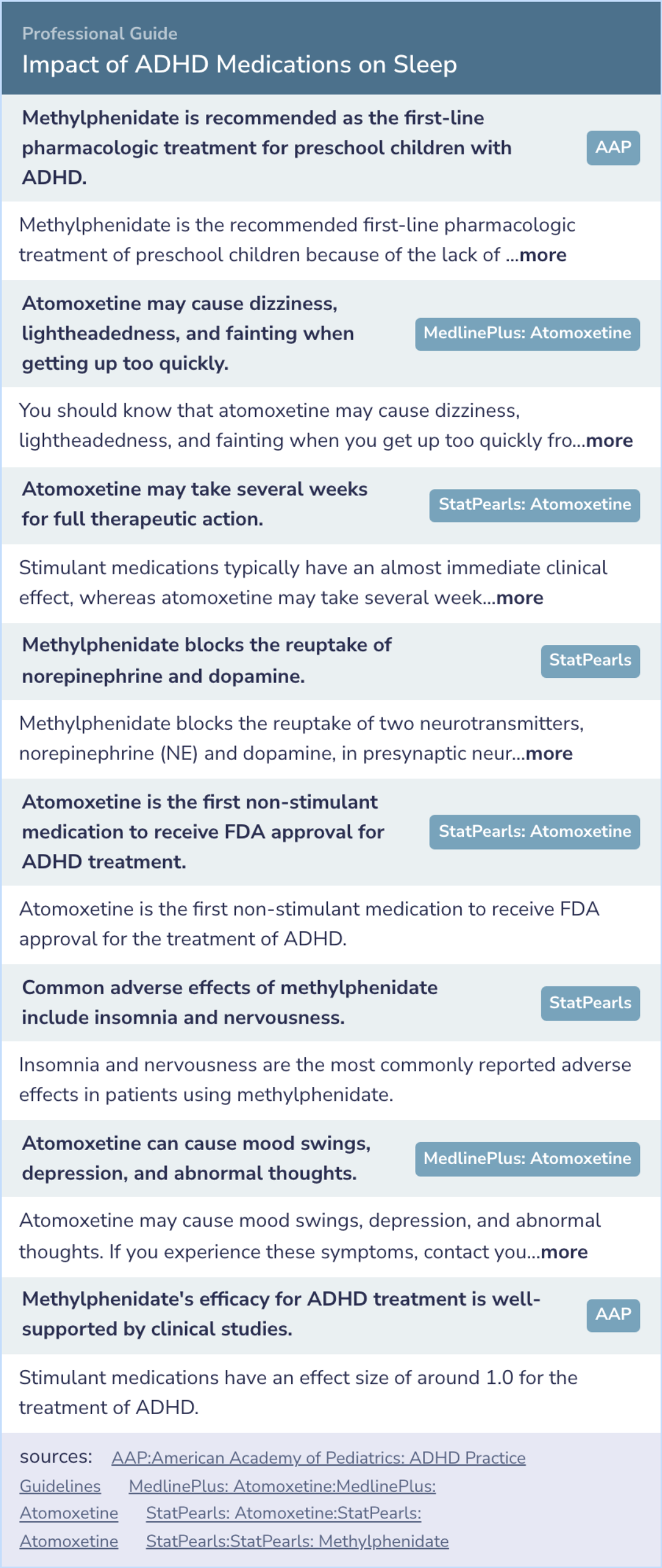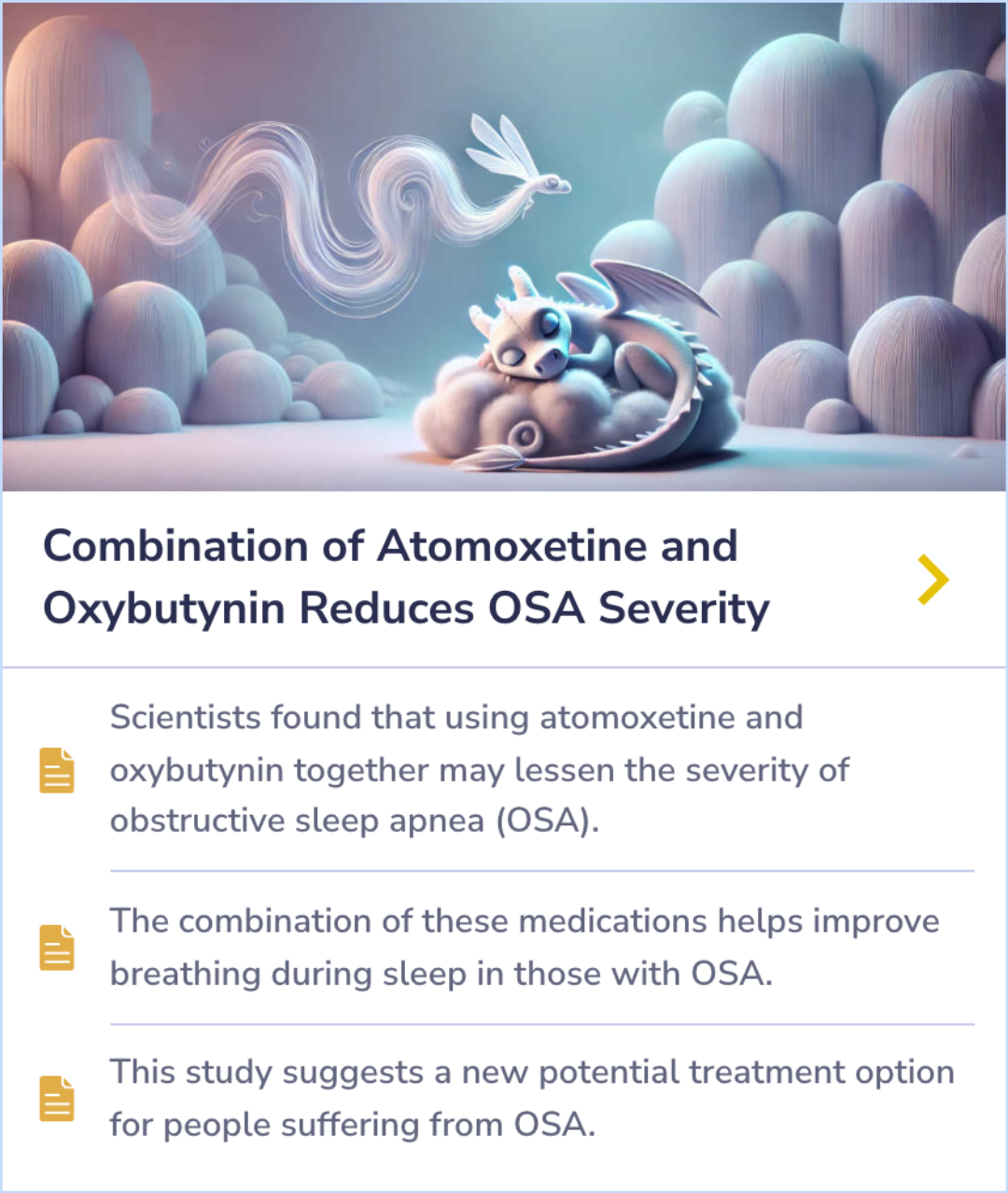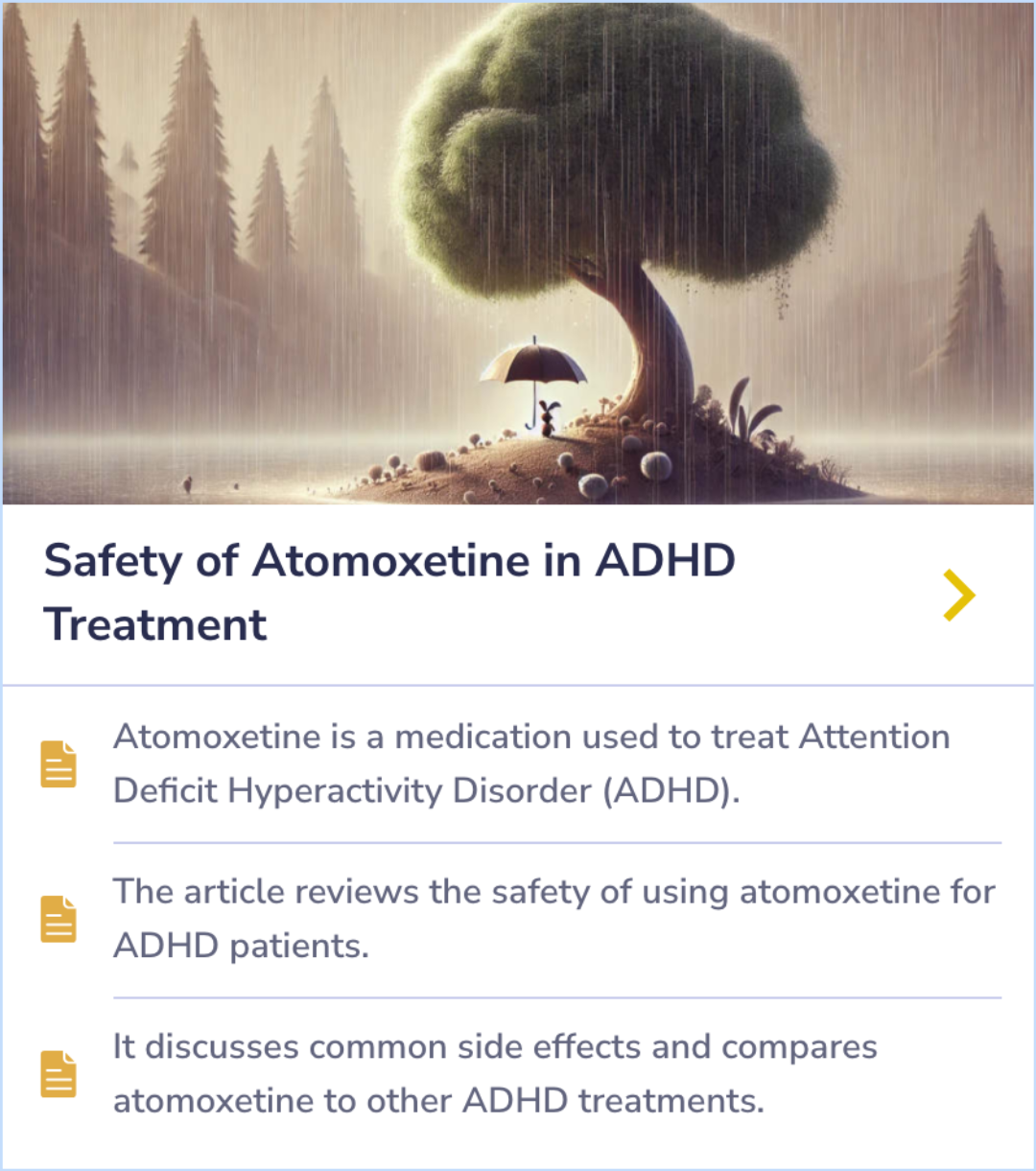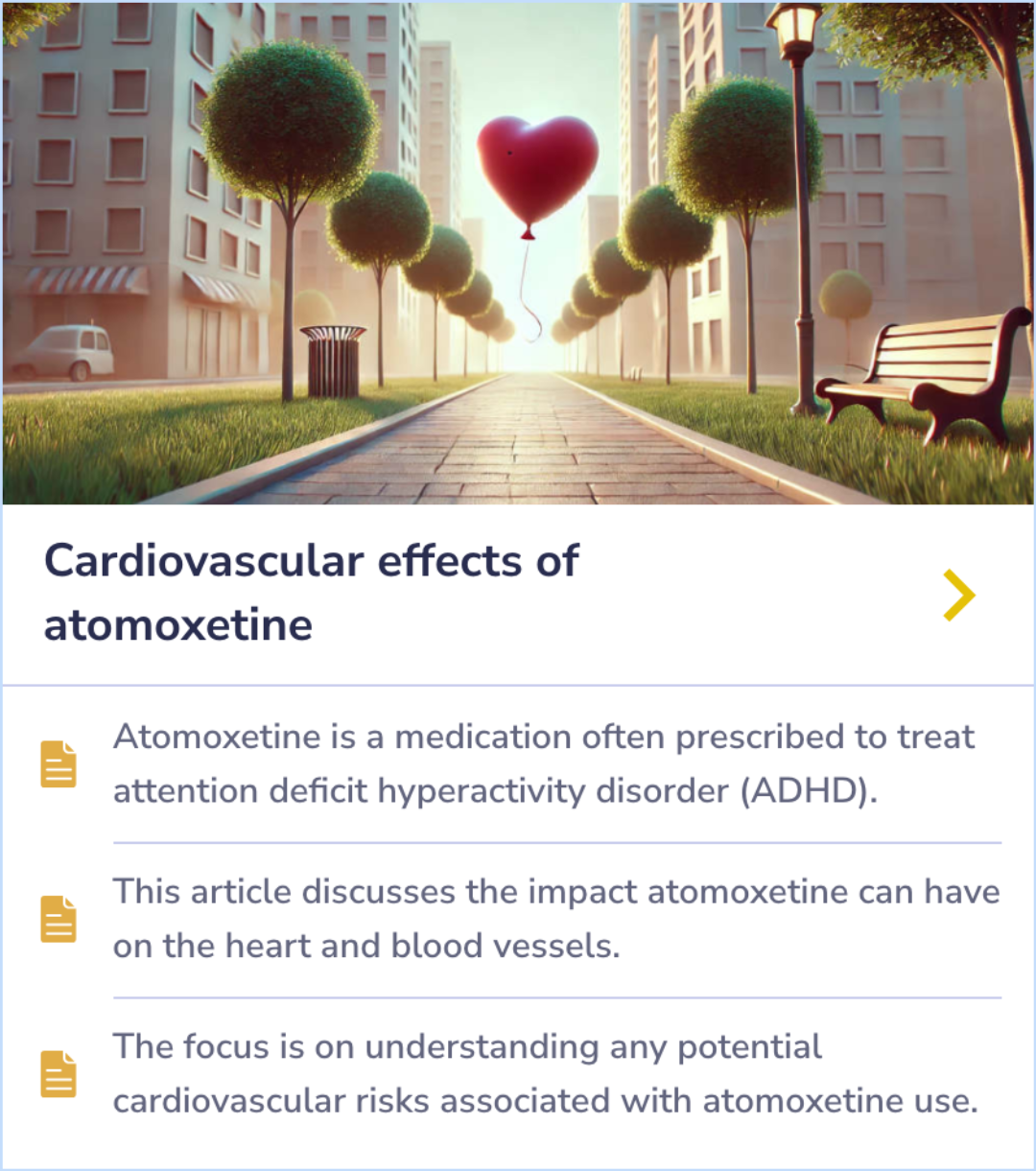Strattera Paper Database
Visual Abstract
Effects of atomoxetine and methylphenidate on sleep in children with ADHD
Impact of ADHD Medications on Sleep
October 25, 2024
author
Sangal RB, Owens J, Allen AJ, Sutton V, Schuh K, Kelsey D
journal
Sleep
Date Published
2006 Dec
Why link to a visual abstract?
What is a visual abstract?
Original
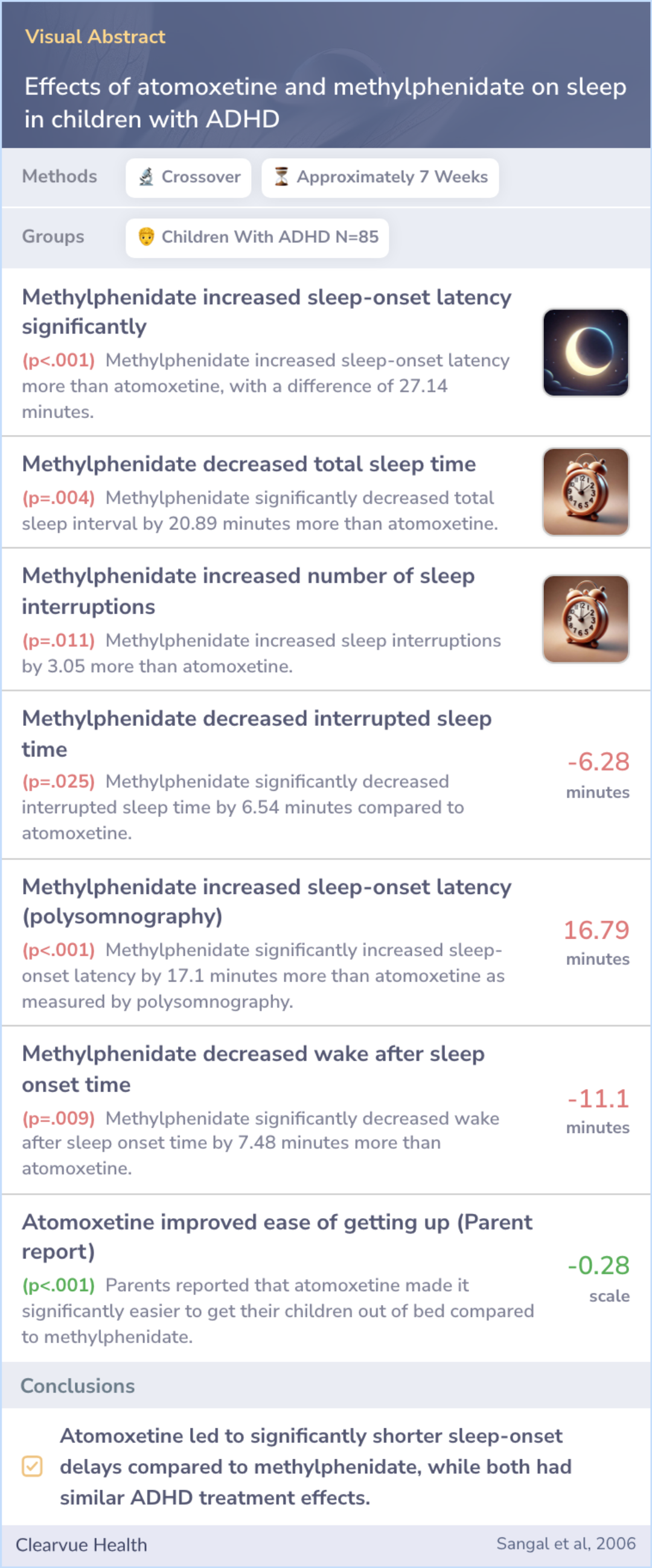
Study Summary
🔬
What They Studied
The study aimed to compare the effects of atomoxetine and methylphenidate on sleep and ADHD symptoms in children with ADHD.
💡
What They Found
The study found that atomoxetine caused less delay in falling asleep and resulted in better sleep quality compared to methylphenidate, despite similar ADHD treatment effects.
📚
What This Means
The findings suggest that atomoxetine may improve sleep-related issues more effectively than methylphenidate for children with ADHD, aligning with current evidence of atomoxetine being part of a comprehensive treatment program.
Study Summary
Study Overview
This study aimed to explore the effects of ADHD medications on sleep by comparing methylphenidate and atomoxetine. It sought to understand how these treatments influence sleep initiation and overall sleep quality in children with ADHD.
The findings revealed that methylphenidate significantly increased sleep-onset latency, highlighting the need for careful consideration when choosing ADHD treatments, especially for children who struggle with sleep disturbances.
The findings revealed that methylphenidate significantly increased sleep-onset latency, highlighting the need for careful consideration when choosing ADHD treatments, especially for children who struggle with sleep disturbances.
Abstract: background
This study compared the effects of atomoxetine and methylphenidate on the sleep of children with attention-deficit/hyperactivity disorder (ADHD). This study also compared the efficacy of these medications for treating ADHD in these children.

Medication Effect on Sleep
"These findings highlight the importance of considering the differential effects of ADHD medications on sleep when selecting a treatment plan, especially in children who may be prone to sleep disturbances."
Atomoxetine as an Alternative
"The findings suggest that atomoxetine may offer a sleep-friendly alternative to stimulant medications, particularly for children with ADHD who are sensitive to the sleep-disrupting effects of stimulants."
Importance of Sleep in Treatment
"The results of this study emphasize the importance of addressing sleep as a critical component of ADHD treatment, as untreated sleep disturbances can negatively impact both behavioral outcomes and overall quality of life."
Study Summary
Methods
For this study, 85 children with ADHD took part in a trial known as randomized, double-blind crossover. This means they randomly received either twice-a-day atomoxetine or three-times-a-day methylphenidate, without knowing which one first. Both medications were tested over two spans of about seven weeks each.
The trial took place in two settings in the United States: a private practice and a hospital setting. Using a crossover design allows researchers to compare the effects within the same group of children under different medication regimes.
The trial took place in two settings in the United States: a private practice and a hospital setting. Using a crossover design allows researchers to compare the effects within the same group of children under different medication regimes.
Abstract: methods
Randomized, double-blind, crossover trial. Two sleep disorders centers in the United States; 1 in a private-practice setting and 1 in a hospital setting. 85 children diagnosed with ADHD. Twice-daily atomoxetine and thrice-daily methylphenidate, each ...more

Study Summary
Results
The study found that methylphenidate increased the time it took kids to fall asleep more than atomoxetine did. Parents noticed that with atomoxetine, their children found it easier to wake up and fall asleep, slept better, and were less irritable in the mornings.
Both medications were equally effective for ADHD symptoms, but atomoxetine was better on some measures. Methylphenidate was linked to more cases of decreased appetite and insomnia than atomoxetine.
Both medications were equally effective for ADHD symptoms, but atomoxetine was better on some measures. Methylphenidate was linked to more cases of decreased appetite and insomnia than atomoxetine.
Abstract: results
Relative to baseline, the actigraphy data indicated that methylphenidate increased sleep-onset latency significantly more than did atomoxetine (39.2 vs 12.1 minutes, p < .001). These results were consistent with the polysomnography data. Child diarie...more
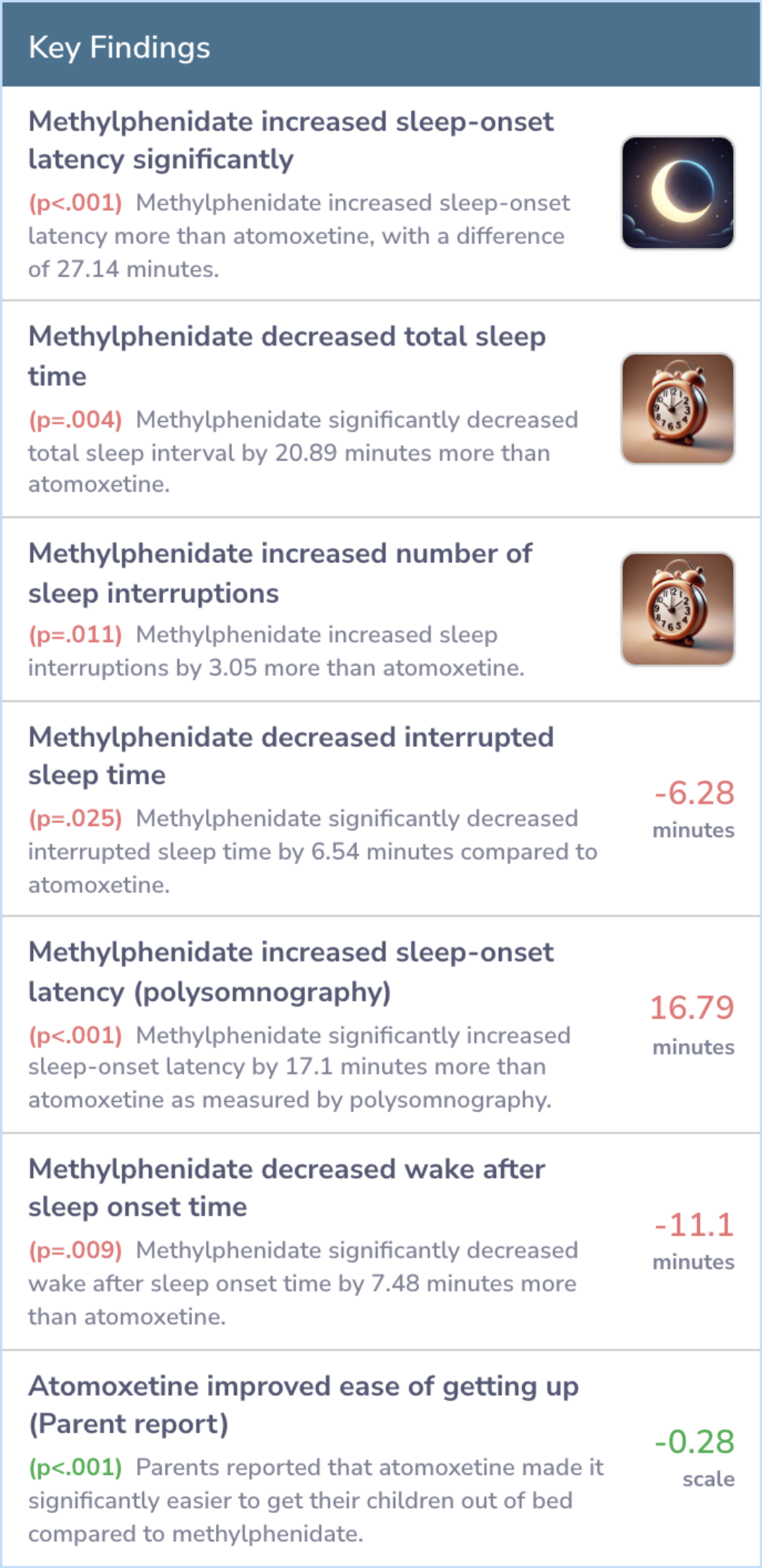
Study Summary
Conclusions
Atomoxetine led to kids falling asleep faster than those taking methylphenidate, based on sleep tracking and sleep studies. Even though both medications helped reduce nighttime awakenings, methylphenidate showed a slightly greater reduction.
This suggests that atomoxetine might be a better option for children with ADHD who struggle with sleep, while both medications are effective in managing ADHD symptoms.
This suggests that atomoxetine might be a better option for children with ADHD who struggle with sleep, while both medications are effective in managing ADHD symptoms.
Abstract: conclusions
Patients receiving twice-daily atomoxetine had shorter sleep-onset latencies, relative to thrice-daily methylphenidate, based on objective actigraphy and polysomnography data. Although both medications decreased nighttime awakenings, the decrease was...more

Background Information
Patient Guide
⚙️
Atomoxetine Mechanism
Selective norepinephrine reuptake inhibitor impacting dopamine regions relevant to ADHD treatment.
🧠
Methylphenidate Mechanism
Blocks norepinephrine and dopamine reuptake, increasing their synaptic concentration, used in ADHD.
🤕
Atomoxetine Adverse Effects
Common reactions include insomnia and decreased appetite, requiring monitoring for psychiatric symptoms.
👀
Methylphenidate Side Effects
Can exacerbate cardiovascular issues and psychiatric symptoms, necessitating careful monitoring.
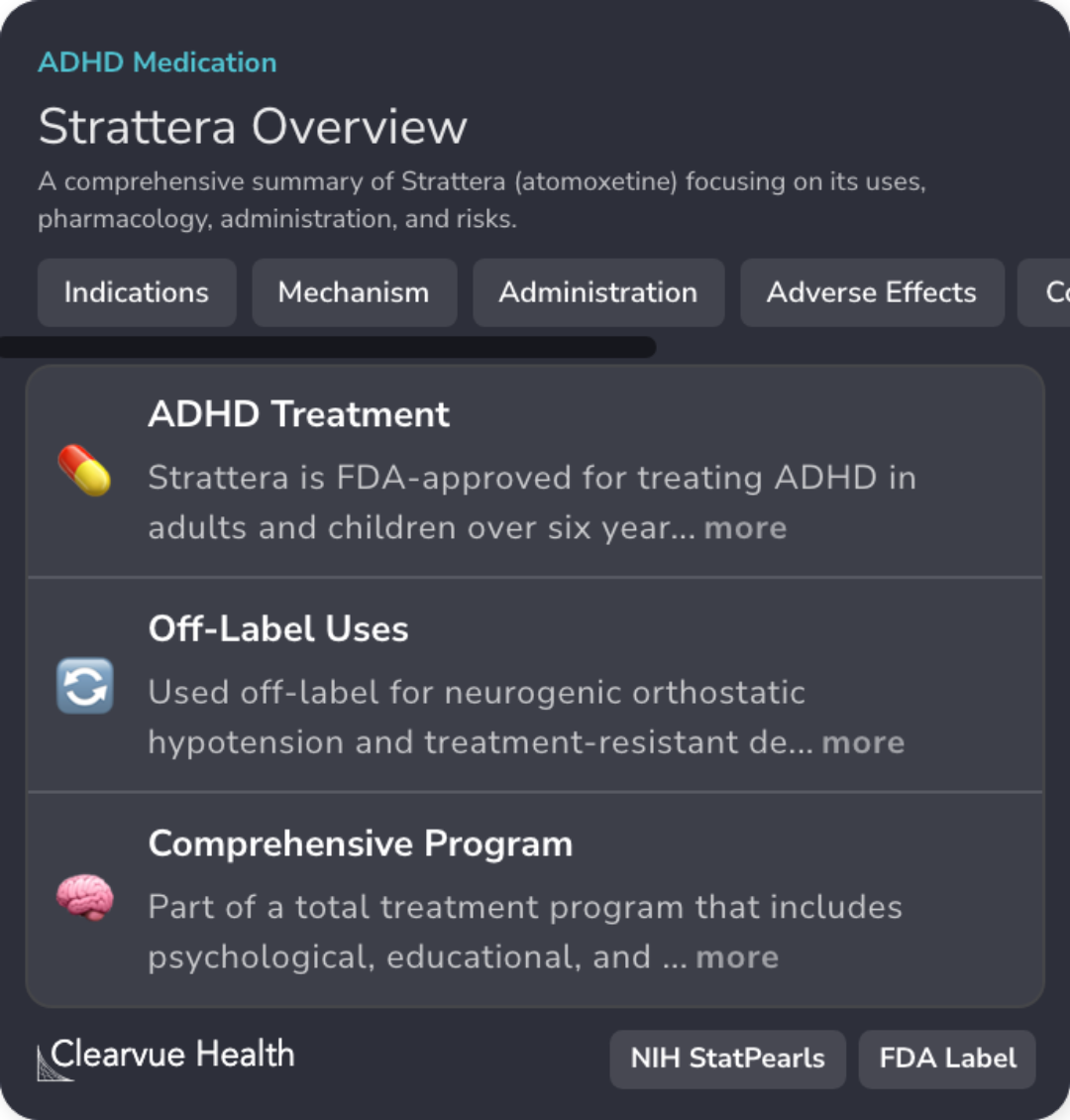
Professional Guide
Expert Opinion: Impact of ADHD Medications on Sleep
The study highlights how atomoxetine can improve sleep in children with ADHD compared to methylphenidate.
Methylphenidate, recommended for preschool children with ADHD, frequently causes insomnia and nervousness due to its mechanism of blocking norepinephrine and dopamine reuptake.
Conversely, atomoxetine, the first non-stimulant FDA-approved for ADHD, may take weeks for full effect and can cause dizziness, mood swings, and other side effects.
Methylphenidate, recommended for preschool children with ADHD, frequently causes insomnia and nervousness due to its mechanism of blocking norepinephrine and dopamine reuptake.
Conversely, atomoxetine, the first non-stimulant FDA-approved for ADHD, may take weeks for full effect and can cause dizziness, mood swings, and other side effects.
Evidence Summary
Atomoxetine and Oxybutynin: A Promising Combo for OSA
The combination of atomoxetine and oxybutynin shows promise in reducing the severity of obstructive sleep apnea (OSA). This approach may improve breathing during sleep, offering a potential new treatment option for those struggling with OSA.
Research highlights that these medications together can lessen the impact of OSA, paving the way for better sleep outcomes for affected individuals.
Research highlights that these medications together can lessen the impact of OSA, paving the way for better sleep outcomes for affected individuals.
Evidence Summary
Comparing Atomoxetine's Safety and Side Effects in ADHD Treatment
Atomoxetine, used for treating ADHD, is examined here for its safety profile. The overview highlights common side effects and compares them with other ADHD treatments, offering insight for those exploring medication options.
The discussion centers on how atomoxetine fares against alternatives, focusing on side effects and the overall safety for patients considering this treatment option.
The discussion centers on how atomoxetine fares against alternatives, focusing on side effects and the overall safety for patients considering this treatment option.
Evidence Summary
Cardiovascular Considerations with Atomoxetine Use
Atomoxetine, a common ADHD medication, has been examined for its potential impact on cardiovascular health. The discussion focuses on whether the use of atomoxetine may be linked to heart and blood vessel risks, offering insight into its possible side effects. While atomoxetine's effects on ADHD are widely known, this highlights its relevance to cardiovascular safety.
This section addresses concerns around atomoxetine's impact on the heart and blood vessels, essential for those considering its use in ADHD treatment.
This section addresses concerns around atomoxetine's impact on the heart and blood vessels, essential for those considering its use in ADHD treatment.
